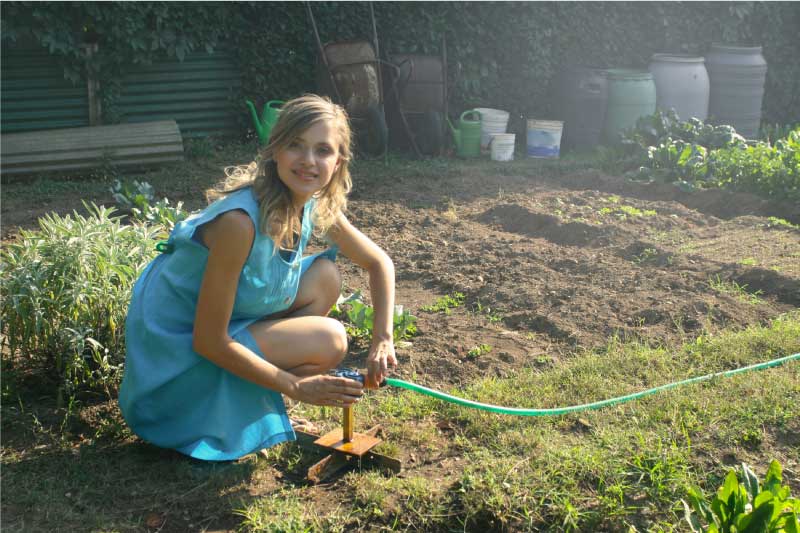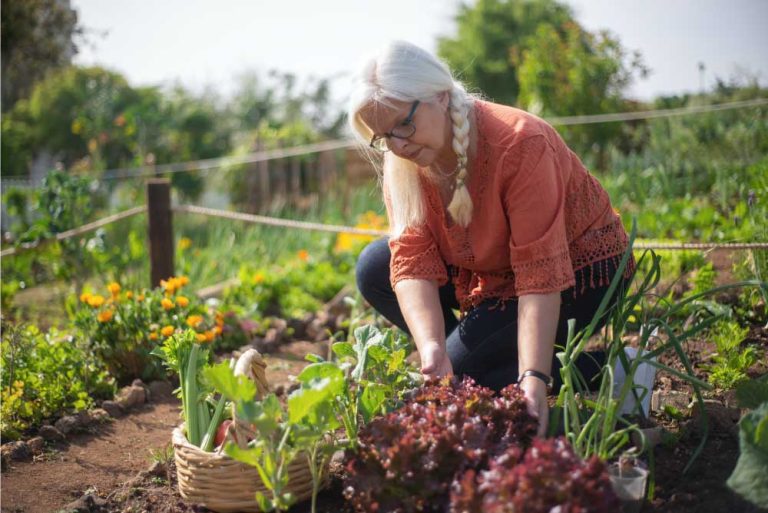Getting Started with Food Gardening
Is it time for you to develop a green thumb? Hopefully so!
If you’re on the fence about whether you should get into gardening, hopefully the information I’ve provided here will convince you to give it a try. I’ll explain some of the several reasons it makes sense to at least get started and try out gardening.
Gardening is not only a hobby that helps with mental health, motivating you to get you outside where you can take in some vitamin D and experience nature, but it can also be a great way to become self-sufficient. Growing your own vegetables, fruits, and herbs allows you and your family to enjoy fresh, organic produce, and it can also save you money and provide a sense of satisfaction and accomplishment.
When you grow your own food, you have control over the quality and variety of produce you consume. You can choose to grow heirloom varieties or experiment with different vegetables and fruits that may not be readily available at the grocery store. Additionally, you can choose to grow your plants using organic methods, avoiding harmful chemicals and pesticides that may be present in store-bought produce.
Gardening can also save you money on groceries. Seeds and plants are relatively inexpensive, and with proper care and maintenance, they can produce a bountiful harvest. You can also save money by preserving excess produce through canning, freezing, or drying.
Gardening provides a sense of satisfaction and accomplishment as you watch your plants grow and thrive. There is nothing quite like harvesting your own produce and knowing that you played a part in its creation. Gardening can also be a relaxing and therapeutic activity that allows you to connect with nature and reduce stress.
If you are interested in becoming more self-sufficient through gardening, start small and choose plants that are easy to grow in your area. Consider starting a vegetable garden in your backyard or creating a small herb garden on your windowsill. You can also join a local gardening club or community garden to learn from experienced gardeners and share tips and resources.
Taking a Class Versus Learning On The Fly
If you’re just getting started with growing your own food in the garden, you’re likely going to need to decide whether to jump in and just plant some stuff, learning how it works along the way or whether you need to wrap your head around some concepts taught in a gardening course.
I’ve always been one to jump in and get started sooner than later, opting for the assertive approach to getting started right away and learning the academic stuff along that way. You may not be that way.
Here are some things to consider regarding whether you should take a class to get the education you feel like you need to be successful or whether you should just get some seeds into the ground right away.
Taking a Gardening Class: One of the benefits of taking a gardening class is that you can learn from experienced instructors who can provide you with knowledge and guidance on everything from soil preparation to plant selection. You can also ask questions and get personalized advice that can help you avoid common mistakes and maximize your chances of success. Additionally, taking a gardening class can be a great way to meet other people who share your interest in gardening and build a community around this activity.
Jumping In and Learning on the Fly: One of the benefits of jumping in and starting a garden without formal instruction is that you can learn by doing and gain hands-on experience. This approach can also be more flexible, as you can start whenever you’re ready and work at your own pace.
If you decide to jump in and start a garden on your own, here are some tips to help you get started:
- Start small: It’s best to start with a small garden so that you can learn the basics without getting overwhelmed.
- Choose the right location: Make sure your garden gets plenty of sunlight and is located in a spot with good drainage.
- Prepare the soil: Before planting, prepare the soil by adding compost and other organic matter.
- Learn as you go: Don’t be afraid to make mistakes and learn from them. Keep track of what works and what doesn’t so that you can adjust your approach in the future.
Whether you decide to take a gardening class or jump in and start a garden on your own, there are benefits and drawbacks to each approach. Ultimately, the best approach depends on your personal learning style, goals, and preferences.
What Should You Plant In Your Garden?
The 10 most commonly grown garden plants in the United States are tomatoes, peppers, cucumbers, lettuce, beans, carrots, onions, squash, herbs, and strawberries. Here’s why they are so popular:
- Tomatoes: Tomatoes are the most commonly grown garden plant in the United States. They are easy to grow and can be used in a wide variety of dishes, making them a versatile and popular choice.
- Peppers: Peppers come in a variety of colors, shapes, and flavors, and are a popular addition to many dishes. They are also relatively easy to grow and can be grown in containers, making them a great choice for small gardens or urban areas.
- Cucumbers: Cucumbers are easy to grow and produce a lot of fruit. They can be used in salads, pickles, and other dishes, and are a refreshing and healthy snack.
- Lettuce: Lettuce is a popular choice for gardeners because it is easy to grow and can be harvested multiple times throughout the growing season. It is also a healthy and versatile ingredient in salads, sandwiches, and other dishes.
- Beans: Beans are a nutritious and versatile vegetable that can be used in a variety of dishes. They are easy to grow and can be harvested multiple times throughout the growing season.
- Carrots: Carrots are a popular root vegetable that are easy to grow and can be used in a variety of dishes. They are also a great source of vitamins and minerals.
- Onions: Onions are a staple ingredient in many dishes and are relatively easy to grow. They can be used in a variety of dishes and can be stored for long periods of time.
- Squash: Squash comes in a variety of types, including summer squash and winter squash. They are easy to grow and produce a lot of fruit, making them a great choice for gardeners.
- Herbs: Herbs, such as basil, parsley, and cilantro, are easy to grow and can be used in a variety of dishes. They are also a great way to add flavor to your cooking.
- Strawberries: Strawberries are a sweet and delicious fruit that are relatively easy to grow. They can be used in a variety of dishes, including desserts and smoothies, and are a healthy snack.
These 10 garden plants are popular because they are easy to grow, versatile, nutritious, and delicious. They can be used in a variety of dishes and are a great way to add fresh and healthy ingredients to your cooking.
Growing Your Own Food Versus Store Bought Food
There are many benefits to eating food grown in your own garden versus what you would buy at the store. Here are some of the key advantages to growing your own food:
- Fresher and More Nutritious: When you grow your own fruits and vegetables, you can harvest them at their peak ripeness and eat them immediately. This means that they will be fresher and more nutritious than produce that has been shipped long distances to the grocery store. Additionally, you have control over the type of soil, fertilizers, and pesticides used to grow your food, which can affect its nutrient content.
- Better Taste: Homegrown produce often tastes better than store-bought produce because it is picked at its peak ripeness and hasn’t been subjected to the rigors of transportation and storage.
- Variety: When you grow your own food, you have access to a wider variety of fruits and vegetables than what is typically available at the grocery store. This can allow you to experiment with new flavors and recipes.
- Cost Savings: Growing your own food can be cost-effective, especially if you start from seeds rather than buying mature plants. Additionally, you can save money on transportation costs and markups from grocery stores.
- Physical Activity: Gardening can provide physical activity, which can be beneficial for overall health and wellbeing.
- Stress Relief: Gardening has been shown to reduce stress and promote relaxation, which can have a positive impact on mental health.
Eating food grown in your own garden can provide many benefits, including fresher and more nutritious food, better taste, a wider variety of produce, cost savings, environmental sustainability, physical activity, and stress relief.
Gardening is not only a rewarding hobby but also a great way to become more self-sufficient. By growing your own food, you can enjoy fresh, organic produce, save money on groceries, and experience a sense of satisfaction and accomplishment. Whether you are a beginner or an experienced gardener, there are many ways to start cultivating your own fruits, vegetables, and herbs today.


